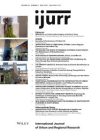How does urbanization shape animal life? And how do animals shape urbanization? What would urban justice look like if we took multispecies relations seriously? These are lines of inquiry that have only rarely been pursued in IJURR. A few key exceptions notwithstanding, the journal has not engaged with ‘the animal question’ in a meaningful way. This is surprising for more than one reason.
First and foremost, IJURR has been a core site for debates in urban political ecology. Over the past two decades, many of our authors have been at the forefront of analyzing the urbanization of nature and the politics of this process. These articles have focused on a range of flows (water, sewage, waste, energy) and sites (parks, urban forests, vacant lots) to highlight the entanglement of urban ecologies with capitalist extraction and distinct forms of political disenfranchisement in and beyond cities. They have developed sophisticated analyses of the social inequalities and ecological harm that are produced in tandem. However, this expansive body of work in urban political ecology has concentrated largely on inanimate biophysical flows, leaving the politics of sentient, other-than-human urban life largely unexamined – although plants have been receiving increasing attention. IJURR’s development of urban political ecology has also tended to privilege human agency, paying relatively little attention to how living animal organisms may also act agentively to co-produce urban space and indeed urban politics. As the contributions to this Spotlight On show, animals can play an active role in urban place-making, in facilitating the emergence of specific economies, or in the uneven distribution of resources and care.
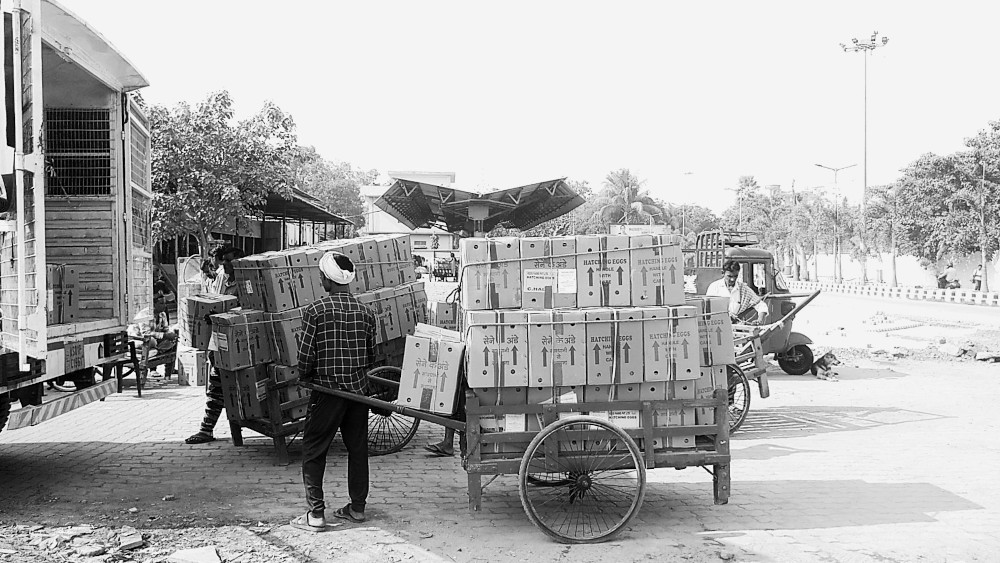
Following the urban topologically: eggs arriving in the Guwahati railway station. Photo: Maan Barua, 2022.
A second body of impactful IJURR scholarship, on infrastructure and other forms of urban materiality, has also sought to understand cities as more-than-human formations – often in close conversation with urban political ecology. Such articles have often focused on specific material objects and networks of circulation to understand how these sociotechnical systems distribute people, resources and risks across space and how they insert cities into wider financial, political and ecological circuits. While IJURR authors working on infrastructure and technology have engaged with conceptualizations of material agency to understand how urban matter mediates sociopolitical relations, they have overall disregarded the role of other-than-human life, of living animal organisms. Infrastructural materials and technologies reflect and influence human lives and preoccupations; however, they also take on specific forms and meanings as a result of interactions with animals.
Through this Spotlight On, we seek to engage more directly with interdisciplinary urban research on human-animal relations. A growing number of urban scholars draw on more-than-human approaches to unsettle mainstream understandings of cities as ‘man-made environments’. Connecting to such approaches, the essays collected here approach cities and urban politics as involving both humans and animals, while also taking into account other forms of non-human life and of non-living matter.
Aseela Haque introduces the concept of more-than-human public space to highlight the agentive role of animals in shaping public space. Her analysis of Karachi’s ‘Kabootar Chowk’, or Pigeon Roundabout, shows how such roundabouts can foster intimate human-bird relations, even as they gain their meaning from these same relations. Ritualized forms of feeding attract pigeons to such public spaces, where Karachi residents pause their movements through the city to engage with the birds, buying seeds and grains from vendors whose livelihood is sustained by the birds. The publicness of these spaces is fashioned by both human and avian rhythms, with the pigeons’ circadian rhythms determining the roundabout’s level of liveliness. Here, the encounters between humans and pigeons enact specific urban affective atmospheres, although what constitutes a joyful atmosphere to humans may present a frightening experience to the birds.
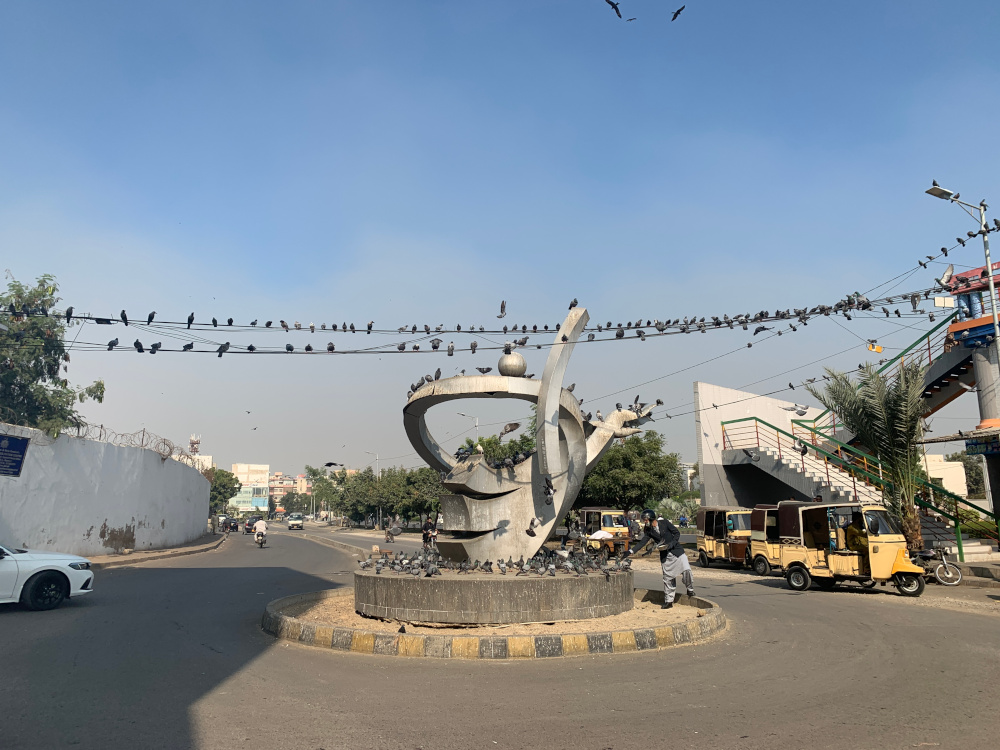
‘Pigeon Roundabout’ on a Sunday afternoon in DHA Phase II, Karachi. Photo by Aseela Haque.
Giovanna Capponi’s essay similarly highlights practices of animal feeding that evidence more-than-human urban geographies of care and neglect. She focuses on Rome’s feral cat colonies, of which more than 4000 are estimated to exist. The city’s free-roaming cats, declared ‘bio-cultural heritage’ and protected by law, are overall embraced by urban residents and by ‘cat ladies’ in particular. Italian law and municipal regulation establish the feral cats’ territorial rights and encourage cat ladies to register as legal gatekeepers and protectors of specific colonies. Capponi explores how these more-than-human legalities shape the use and meaning of urban space in multiple ways. Comparing cat colonies in touristic sites with those in more marginalized areas, she identifies intersecting forms of socio-spatial inequalities. Like the humans who inhabit Rome’s peripheral spaces, the cats who live there receive less resources and attention. At the same time, within these interspecies marginal spaces, the care that those cats who live there receive often extends to more vulnerable humans and to other, less charismatic non-human animals, as the cat colonies and cat ladies foster opportunities for humans and other-than-humans to access food and protection.
Two other contributions foreground the contemporary conflicts and dilemmas associated with urban human-animal relations. In their essay, Nicoli Nattrass and Zoë Woodgate scrutinize multispecies relations between humans, rodents, cats and wildlife in Cape Town. They mobilize the concept of cosmopolitics to understand how conflicting worldviews and political-economic interests shape the lives and deaths of different species. They discuss the ethics of rodent control in a working-class suburb, where a rat-drowning program aimed at avoiding the health and ecological risks of rodenticide use was blocked by an animal-welfare agency. In a wealthier area, residents clashed over whether to protect a wild caracal, or the pet cats it was killing. Finally, free-ranging cats on a university campus are seen as useful rodent control agents, while the threat they present to local wildlife is underestimated. As Nattrass and Woodgate show, how animals are categorized – wild, stray, pet, charismatic or abject – can be a matter of life and death.
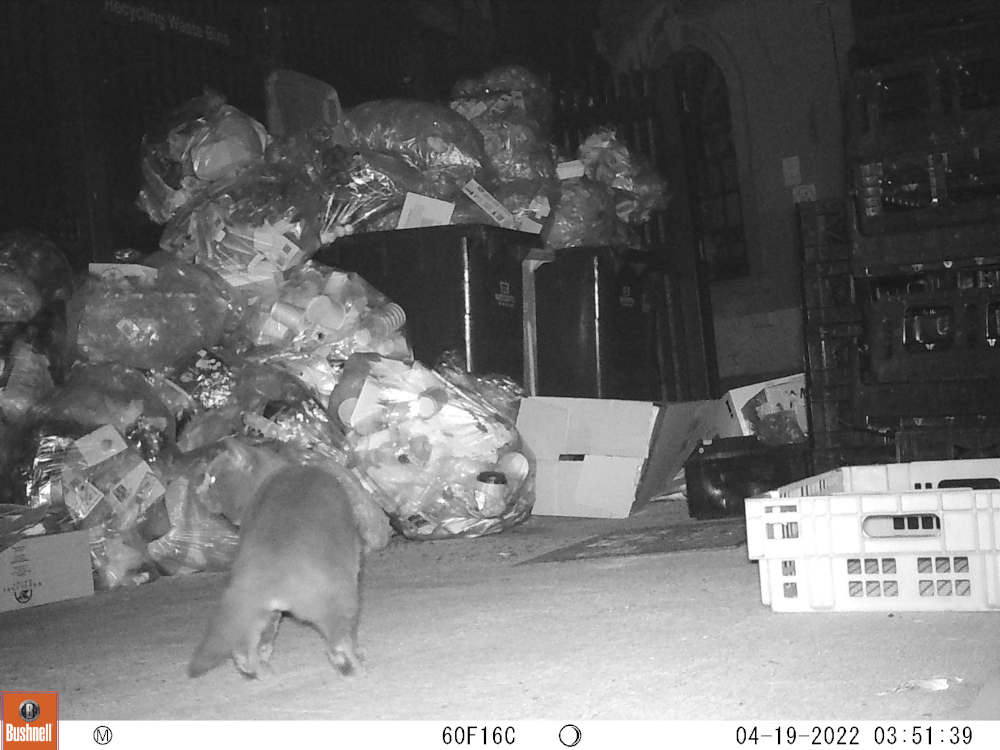
Poorly managed refuse at UCT which encourages rats and attracts cats. Wildlife survey by Zoë Woodgate (2022/2023).
Focusing on animals’ impact on human health, Matthew Gandy’s essay on zoonotic urbanization offers a new perspective on urban space and epidemiological risks in the wake of vector-borne diseases such as dengue, Zika and COVID-19. Situating the transmission of diseases from animals to humans within global histories of capitalist urbanization, this perspective offers a reconceptualization of multispecies urbanism. Gandy highlights how interventions aimed at controlling animal vectors tend to target marginalized spaces and populations disproportionately. Such localized interventions misrecognize the structural processes of uneven urban development that underlie concentrations of epidemiological risk. These structural factors include neglected infrastructure or overcrowding, which encourage the flourishing and genetic evolution of specific pathogens. While highlighting the inequalities associated with the human-animal-material dynamics involved in epidemiological risk mitigation, Gandy also points out less violent forms of intervention, from ecological design and integrated pest management to changes in human diet.
Recognizing how animals’ geographies involve relations with humans, the built environment and other forms of urban matter directs our attention to the wider regional, national and transnational circuits in which animals participate. This challenge to methodological cityism comes out most clearly in the essays by Maan Barua and Dawn Day Biehler. In his contribution, Maan Barua uses the conceptual lens of urban metabolism to demonstrate how the movements of animals, feed and waste connect cities to elsewheres, extending beyond city limits. His essay connects urban political ecology’s often metaphorical engagement with the concept of metabolism to work within science and technology studies that engages in a more literal sense with the corporeal and biochemical processes of eating, digesting and excreting. Focusing on urban chicken life in Guwahati, Barua’s analysis of metabolic processes challenges traditional distinctions between bodies (whether human or non-human) and their environments. Foregrounding the act of eating and expelling, he argues, helps destabilize the bounded subject; it shows us how bodies and the urban environment co-constitute each other. Chickens’ foraging and feeding are modes of dwelling that can reshape a small patch of urban space, even as the dynamics of the larger poultry industry – from egg-hatching and poultry-feed to butchering and repurposing offal – tie a city like Guwahati to rural hinterlands and to other cities.
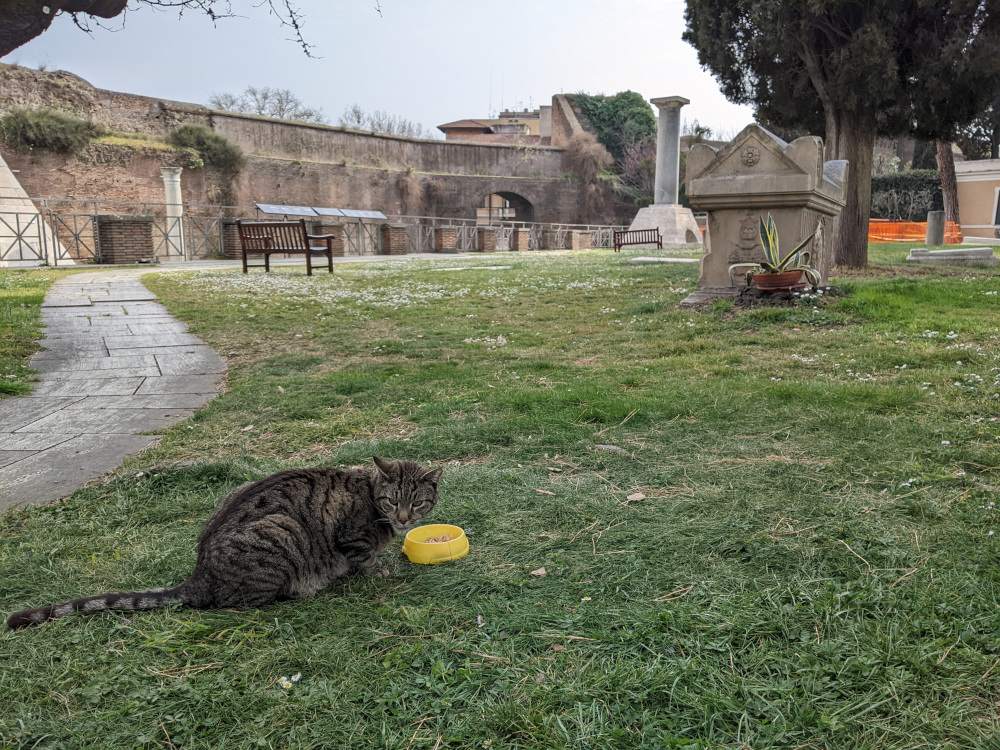
Persichetta, a member of the Pyramid cat colony, being fed. Photo by Giovanna Capponi
Dawn Day Biehler’s essay similarly responds to critiques of methodological cityism in urban political ecology by situating urban animal life within more expansive geographies of capitalist urbanization. Starting from the lives of two individual bison housed at the National Zoo in Washington, DC, she shows how bison lives and histories tie US cities to the North American interior through a process of urbanization that is inseparable from settler colonialism and state formation. As the commodification and destruction of nature across the continent and indeed the globe fueled the growth of US cities, concerned conservationists founded urban zoos and parks to promote nature appreciation and to protect bison and other wildlife. Such attempts at bison conservation were both induced and enabled by military and corporate expansion into the American West, which involved the dispossession of the Native Americans and the destruction of bison herds. Taking a historical geography approach to the entanglement of urbanization and animal life, Biehler’s contribution also highlights the importance of extending the spatial and the temporal scope of our analyses of the urbanization of nature.
Exploring a range of multispecies encounters and relationships, the contributions to this Spotlight On push us to trouble longstanding distinctions between urban subjects and objects, extending our understanding of political agency in new directions. They draw on a range of methods – from archival research to multispecies ethnography to camera trap surveys – to emphasize that human-animal relations are a site of urban politics in which speciesism often coincides with raced, classed and gendered hierarchies. Yet at the same time as they call our attention to these intersecting forms of inequality, these essays also show us that, once we take the time to look, we will also recognize instances of interspecies care and solidarity all around us.
Rivke Jaffe is Professor of Urban Geography at the University of Amsterdam and an editorial board member of IJURR. She is currently leading an ERC-funded project on the role of animals in the formation of urban inequalities.
All essays on Animals and the City
Introduction: Animals and the City
Rivke Jaffe
On More-than-human Public Space: Kabootar Chowk in Karachi
Aseela Haque
Affective Geographies: Managing Feral Cat Colonies in Rome
Giovanna Capponi
Urban Animals: Bison on Display, and the Grand Temporal and Geographic Scales of Urbanization
Dawn Biehler
The Metropolis and Metabolic Life
Maan Barua
Zoonotic Urbanization
Matthew Gandy
Cats, Commensal Rodents and Cosmopolitics in Cape Town
Nicoli Nattrass & Zoë Woodgate
Related IJURR articles on Animals and the City
Weeds, Pheasants and Wild Dogs: Resituating the Ecological Paradigm in Postindustrial Detroit Paul Draus and Juliette Roddy
The Zoonotic City: Urban Political Ecology and the Pandemic Imaginary Matthew Gandy
Rethinking Urban Epidemiology: Natures, Networks and Materialities Meike Wolf
Of Holy Cows and Unholy Politics: Dalits, Annihilation and More-than-Human Urban Abolition Ecologies Rajyashree N. Reddy
